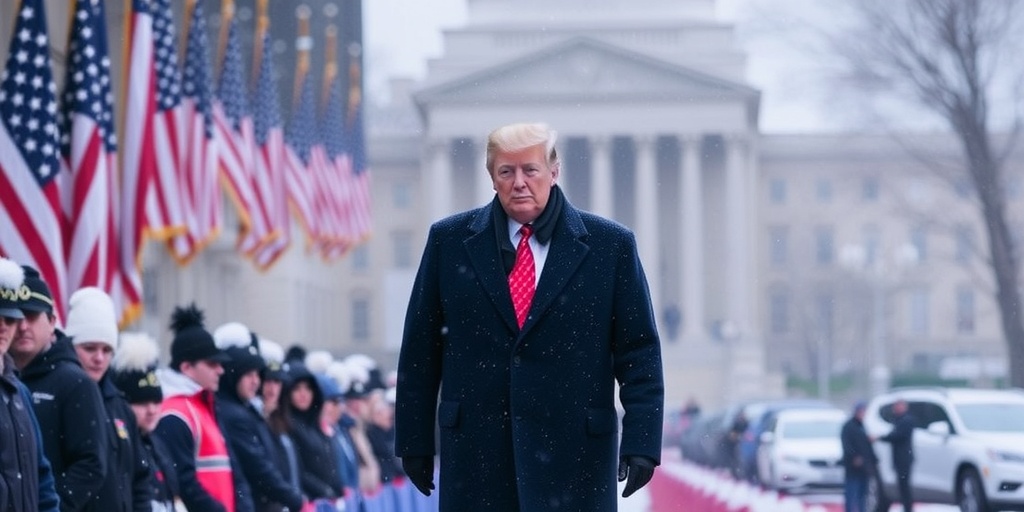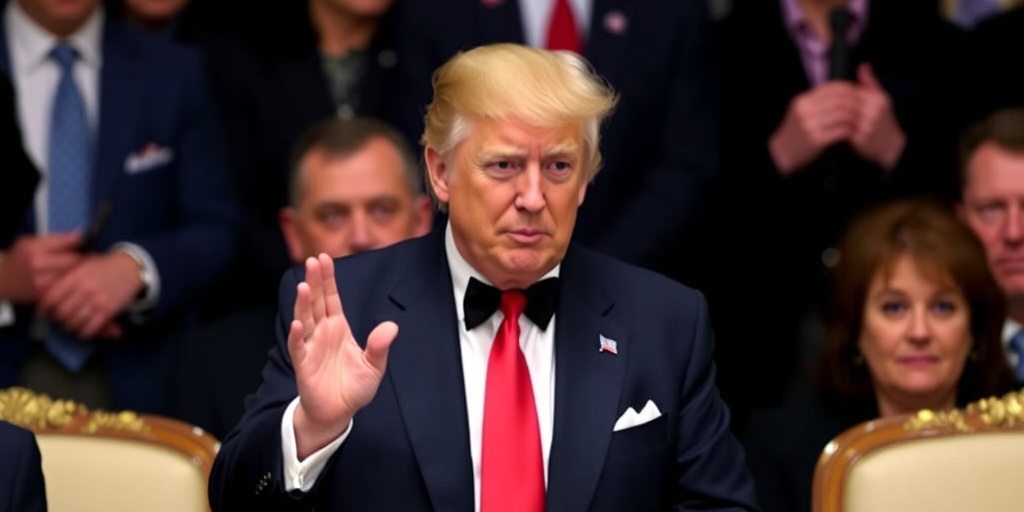Now Reading: Oil Firms Seek Cost Cuts, But Tariffs Drive Prices Up
-
01
Oil Firms Seek Cost Cuts, But Tariffs Drive Prices Up
Oil Firms Seek Cost Cuts, But Tariffs Drive Prices Up

Challenges Facing U.S. Oil and Gas Industry Amid Tariffs and Economic Uncertainty
In the wake of President Trump’s election commitment to simplify oil and gas drilling procedures, energy industry executives initially expressed optimism, believing that his policies would mitigate costs and enhance profitability. However, that optimism is now giving way to concerns as the ramifications of new tariffs implemented by the Trump administration begin to unfold. These tariffs, particularly on imported steel, are leading to increased expenses for essential materials that the industry relies on, significantly impacting drilling operations.
The oil and gas sector has started to feel the pinch from rising prices for crucial components, including steel pipes necessary for the drilling of new wells. Although the immediate effects on U.S. drilling activities and production forecasts remain marginal, many companies are already adjusting their budgets to account for these increased material costs. Decisions made now regarding which wells to drill will have repercussions on production levels in the months to come.
Additionally, oil refineries are bracing for an impending tariff on Canadian oil, which is vital for producing gasoline, diesel, and other fuels. Such tariffs pose a substantial threat to operations and could result in higher prices at the pump for consumers.
Compounding these issues, consumer anxiety about the economy is palpable, with oil prices dropping approximately 10% since Trump assumed the presidency, settling around $70 a barrel. Historically, when prices decline, oil companies tend to reduce drilling activities, further complicating Trump’s ambition to boost U.S. oil and natural gas output, which is already reaching record levels.
Lori Blong, the mayor of Midland, Texas, a hub for oil production in the U.S., expressed the industry’s dilemma succinctly: “Our ability to ‘drill, baby, drill’ is directly tied to the economics of the well.” She emphasizes that the industry cannot afford to overextend itself financially.
One major source of concern stems from a proposed 25% tariff on imported steel, set to take effect in March. The costs of steel pipes, which represent about 10% of the total expenses for a typical well, have surged substantially. Before the tariff announcement, prices were already on the rise, but they have swelled significantly since.
By February, the average cost of steel pipe used for constructing wells had risen by 10% compared to prices in October, as reported by an Argus Media price index. Elevation Resources, an oil and gas producer in West Texas, foresees costs increasing by 30% for their well-lining pipes due in part to the unavailability of cheaper options. Steve Pruett, the company’s chief executive, noted a stark change following the tariffs: “When Trump announced the tariffs, a switch flipped on availability and pricing.”
While current plans for drilling have not yet changed for Elevation, Pruett warns that the situation is a zero-sum game — higher costs will inevitably lead to fewer wells being drilled if budgets remain constant.
Furthermore, the U.S. is preparing to impose tariffs on energy imports from Canada and Mexico, which adds another layer of complexity for oil refineries and the overall fuel market. The White House has so far not commented on the ongoing concerns regarding tariff impacts. Trump has, however, downplayed potential economic repercussions, confidently asserting, “The benefits will all be worth the price that must be paid.”
As his presidency progresses, the full impact of Trump’s trade policies will become clearer. Material costs, while a significant factor, are just one of many elements affecting the profitability of oil companies. Factors such as improvements in drilling and fracking efficiencies and external geopolitical events, including the ongoing situation between Russia and Ukraine, will also play crucial roles.
The Army Corps of Engineers moved swiftly to expedite permitting for oil and gas projects, facilitating some level of progress within the industry. Additionally, a natural gas export facility proposal received a long-sought approval after being stuck in limbo for years.
Despite the environmental ramifications that come with these energy policies, natural gas prices remain elevated compared to the previous year, attributed partly to colder winter conditions that have increased demand.
However, uncertainty still looms large within the energy sector, as executives grapple with the unpredictability of Trump’s actions. “What do you react to? Which direction do you go? That’s part of the dilemma,” lamented Taylor Potts, a sales manager for a West Texas pipe supplier.
In contrast, the impact of tariff-related price increases is not uniformly felt throughout the industry. Ron Gusek, CEO of Liberty Energy, which provides fracking services for major oil companies, indicated that so far, these tariffs have not drastically altered production plans for their clients.
Gusek anticipates that should costs continue to rise, oil and gas producers will likely curtail drilling and fracking activities rather than increase their spending. Investors, he noted, prefer conservative operations amid uncertainty. Although some larger companies like Devon Energy expect minimal impacts from tariffs, the fluctuating political landscape continues to create a challenging environment for planning and investment.
Amid these challenges, there are signs of potential resurgence in oil sector activity. One oil supply company in West Texas has reported record sales, attributing some of the growth to newly established companies entering the market. Nevertheless, the owner, who identifies as a staunch Trump supporter, voiced concern over the fluctuating nature of the industry and the effectiveness of Republican policies in fostering sustained growth.
Stay Informed With the Latest & Most Important News
Previous Post
Next Post
-
 01New technology breakthrough has everyone talking right now
01New technology breakthrough has everyone talking right now -
 02Unbelievable life hack everyone needs to try today
02Unbelievable life hack everyone needs to try today -
 03Fascinating discovery found buried deep beneath the ocean
03Fascinating discovery found buried deep beneath the ocean -
 04Man invents genius device that solves everyday problems
04Man invents genius device that solves everyday problems -
 05Shocking discovery that changes what we know forever
05Shocking discovery that changes what we know forever -
 06Internet goes wild over celebrity’s unexpected fashion choice
06Internet goes wild over celebrity’s unexpected fashion choice -
 07Rare animal sighting stuns scientists and wildlife lovers
07Rare animal sighting stuns scientists and wildlife lovers





















